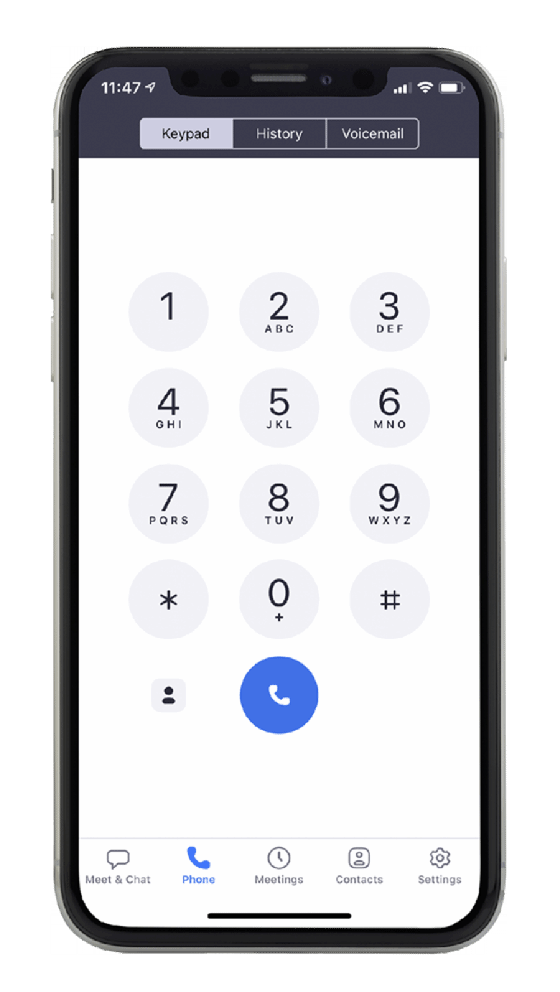
Getty Images/iStockphoto
Zoom Phone system offers flexibility, simplified infrastructure
The Zoom Phone system offers simplicity and flexibility to support remote and hybrid work. IT leaders at Enterprise Connect Virtual discuss their Zoom Phone migration strategies.
Pharmaceutical company Gilead Sciences had a long-term strategy to move its communications services to a unified communications-as-a-service platform. But the pandemic forced the company to accelerate its plans.
Gilead, which is based in Foster City, Calif., and operates in 35 countries, had an on-premises deployment of Cisco CallManager, but the pandemic accelerated the need to migrate to the cloud to offer more flexibility to employees, said Kevin Atkin, director of IT at Gilead.
Gilead used Zoom as its primary meeting platform to serve internal and external communications needs. During the pandemic, the pharmaceutical company has held more than 520 million meeting minutes and 42 million public switched telephone network (PSTN) minutes on the Zoom Meetings platform, Atkin said.
"The logical next step was to look at Zoom Phone," he said. Zoom Phone is a cloud-based telephony system that includes traditional PBX features and enables users to make and receive calls directly from Zoom.
Atkin and other industry leaders spoke at Enterprise Connect Virtual about supporting workplace flexibility with the Zoom Phone system.
Atkin said Gilead began with a pre-deployment that enabled home workers to have a dialing capability that didn't require using their personal phone. So far, Zoom Phone has been deployed in seven sites in North America, central Europe and Australia.
Cloud telephony infrastructure simplifies management, UX
The COVID-19 pandemic forced many organizations to reevaluate their communications technology investments and whether they can support long-term remote and hybrid work. For some organizations, the answer is to consolidate and standardize on a primary provider for a simplified infrastructure that also provides flexibility for IT staff and employees.
For Zoom customers, the benefit of deploying the Zoom Phone system is it uses the same infrastructure as Zoom Meetings software, said Graeme Geddes, head of Zoom Phone and Zoom Rooms. By having the same data center footprint and global PSTN support, Zoom Phone can be a natural extension of the Zoom Meetings platform, he said.

Logitech, a Zoom hardware partner, turned to Zoom to modernize its telephony infrastructure. The company had a Cisco CallManager environment, which met calling requirements but could not address future needs, said Mike Barry, head of telecom at Logitech.
When Zoom Phone was first unveiled in 2018, Barry and his team worked with Zoom to establish Logitech's calling priorities, migrate direct inward dialing, establish trunks and create a feature roadmap. Logitech migrated 48 sites to Zoom Phone in less than six months.
"We didn't have many PBXs or legacy hardware in place," Barry said. "We were able to quickly and easily move from our Cisco infrastructure."
The result was a telephony infrastructure that was easier for Logitech's telecom team to manage as staff no longer needed to upgrade servers or maintain contracts. UX for employees was also improved as they can use Zoom Phone and Meetings through a single app and don't need to connect to a VPN.
"There was no additional training for Zoom Phone because it's so familiar," he said.
Bring your own carrier offers flexibility
For its migration to Zoom Phone, Gilead adopted a bring your own carrier (BYOC) approach. The platform offers organizations the ability to keep their carrier contracts to enable hybrid deployments and maintain certain infrastructure investments.
A hybrid approach to Zoom Phone enables Atkin's team to evaluate each location's telecom needs before migrating to the platform. Atkin's team installed a global Session Initiation Protocol infrastructure that offered more flexibility when migrating sites, he said.
While Gilead had a number of legacy PBXs due to acquisitions, a BYOC approach enabled Atkin to pick and choose which users were ready to migrate to Zoom Phone.
For example, one acquisition resulted in a site with users on three separate PBXs, he said. Atkin's team evaluated the users' telephony requirements and migrated half the users to Zoom Phone, while the other half remained with a PBX.







